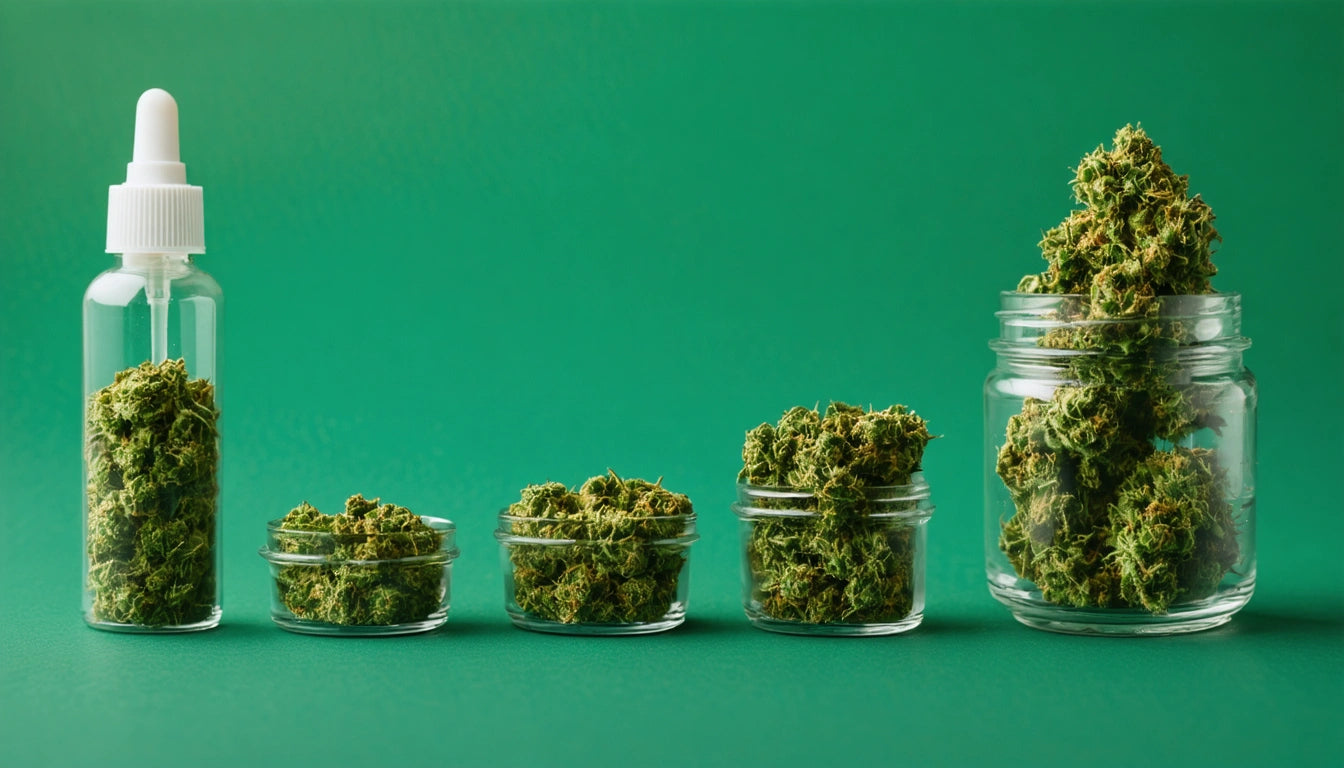- What is RSO? Origins and Basic Definition
- RSO Edibles vs Regular Edibles: Key Differences
- How is RSO Made: Production Methods and Extraction
- How Long Does RSO Take to Work Orally?
- Medical and Recreational Applications of RSO
- Solubility Properties: Will RSO Dissolve in Water?
- Future Developments in RSO Technology and Applications
Understanding RSO: Differences, Uses, and Production in Cannabis Edibles
Rick Simpson Oil (RSO) has gained significant attention in the cannabis community for its potent effects and potential therapeutic benefits. As consumers become more discerning about cannabis products, questions about what RSO means in weed, how it differs from other concentrates, and its applications in edibles have become increasingly common. This comprehensive guide explores RSO's unique properties, production methods, and consumption considerations.
What is RSO? Origins and Basic Definition
RSO, or Rick Simpson Oil, is a concentrated cannabis extract named after its creator, Rick Simpson, who developed it to treat his skin cancer in the early 2000s. Unlike many other cannabis concentrates, RSO is a full-spectrum extract that contains high concentrations of THC (typically 60-90%) along with other cannabinoids, terpenes, and plant compounds.
The term "RSO" on edibles indicates that the product contains this potent oil as its active ingredient. When you see what does RSO mean on edibles packaging, it signifies a product that likely offers stronger effects than standard cannabis-infused options.
RSO Edibles vs Regular Edibles: Key Differences
Understanding the distinction between RSO edibles and regular cannabis edibles is crucial for consumers seeking specific effects.
Potency Differences
RSO edibles typically contain higher concentrations of THC than standard edibles. While regular edibles might contain 5-10mg of THC per serving, RSO-infused products often deliver substantially more potent doses. This higher potency makes accurate dosing particularly important, as discussed in our guide to edibles potency and safety.
Full-Spectrum Effects
Regular edibles are often made with distillate or isolates that contain primarily THC or CBD. In contrast, RSO edibles provide a full-spectrum experience with the complete range of cannabinoids and terpenes from the source plant. This creates what many users describe as a more comprehensive effect profile.
How is RSO Made: Production Methods and Extraction
The production process for RSO differs significantly from other cannabis extracts, contributing to its unique properties.
Traditional RSO Extraction
Traditional RSO is made through a solvent-based extraction method using isopropyl alcohol or ethanol. The process typically involves:
- Soaking dried cannabis plant material in the solvent
- Filtering the plant material from the solution
- Evaporating the solvent using low heat
- Collecting the resulting thick, dark oil
This method extracts a wide range of compounds from the plant, including cannabinoids, terpenes, chlorophyll, and plant waxes, creating a truly full-spectrum product. For those interested in homemade cannabis products, our comprehensive guide to making homemade edibles provides valuable insights.
Commercial Production Variations
Commercial producers may use modified techniques to improve purity or adjust specific properties of RSO. These might include winterization to remove plant waxes or additional filtration steps to reduce chlorophyll content while maintaining the full cannabinoid profile.
How Long Does RSO Take to Work Orally?
When consumed orally, RSO follows similar digestion patterns to other edible cannabis products, though its high potency can influence onset times and duration.
Typical Onset Timeline
How long does RSO take to work orally? Most users report effects beginning within 30-90 minutes after consumption, with peak effects typically occurring at 2-3 hours. However, this timeline can vary based on:
- Individual metabolism
- Whether RSO is consumed with food
- Tolerance levels
- Dosage amount
For a deeper understanding of edibles onset times, our article on how long edibles take to kick in and why provides additional context.
Duration of Effects
Due to its potency and full-spectrum nature, RSO effects typically last longer than those of standard edibles, often 6-8 hours or more. This extended duration makes proper storage crucial to maintain potency over time. Using humidity control solutions for cannabis products can help preserve the quality and effectiveness of RSO products during storage.
Medical and Recreational Applications of RSO
RSO has found applications in both medical and recreational contexts, though it was originally developed for medicinal purposes.
Therapeutic Uses
In medical applications, RSO is often used for:
- Pain management
- Sleep disorders
- Appetite stimulation
- Nausea reduction during cancer treatments
The full-spectrum nature of RSO contributes to what some users describe as enhanced therapeutic effects compared to isolated cannabinoids, a phenomenon often referred to as the "entourage effect."
Recreational Consumption
For recreational users, RSO offers a potent option that can be incorporated into various consumption methods. Its versatility allows it to be:
- Added to food or beverages
- Placed in capsules
- Applied sublingually
- Incorporated into various edible recipes
Understanding individual responses to edibles is crucial when using RSO recreationally, as explored in our article about how edibles affect different people.
Solubility Properties: Will RSO Dissolve in Water?
A common question among cannabis consumers is: will RSO dissolve in water? The answer is no, RSO will not dissolve directly in water due to its oil-based nature. Like other cannabis oils, RSO is hydrophobic (water-repelling) and lipophilic (fat-loving).
Mixing with Carriers
To incorporate RSO into water-based drinks or recipes, it must first be combined with a fatty carrier such as:
- Coconut oil or MCT oil
- Butter or ghee
- Lecithin as an emulsifier
These carriers help disperse the RSO more evenly throughout water-based solutions, though true dissolution doesn't occur. For more on cannabis-infused preparations, our guide on making cannabis-infused honey provides relevant techniques.
Future Developments in RSO Technology and Applications
As cannabis research advances, RSO production and applications continue to evolve. Emerging trends include:
- Strain-specific RSO formulations targeting particular effects
- Improved extraction methods that preserve more terpenes
- Water-compatible RSO formulations using advanced emulsion technology
- Precise dosing mechanisms for medical applications
These innovations are making RSO more accessible and versatile for both medical patients and recreational consumers. As with all cannabis products, understanding what does RSO mean in weed contexts helps consumers make informed choices about products that best suit their needs and preferences.
Whether used for therapeutic purposes or recreational enjoyment, RSO represents one of the most potent and versatile cannabis concentrates available today, offering a full-spectrum experience that many users find distinctive and effective.











Leave a comment
All comments are moderated before being published.
This site is protected by hCaptcha and the hCaptcha Privacy Policy and Terms of Service apply.